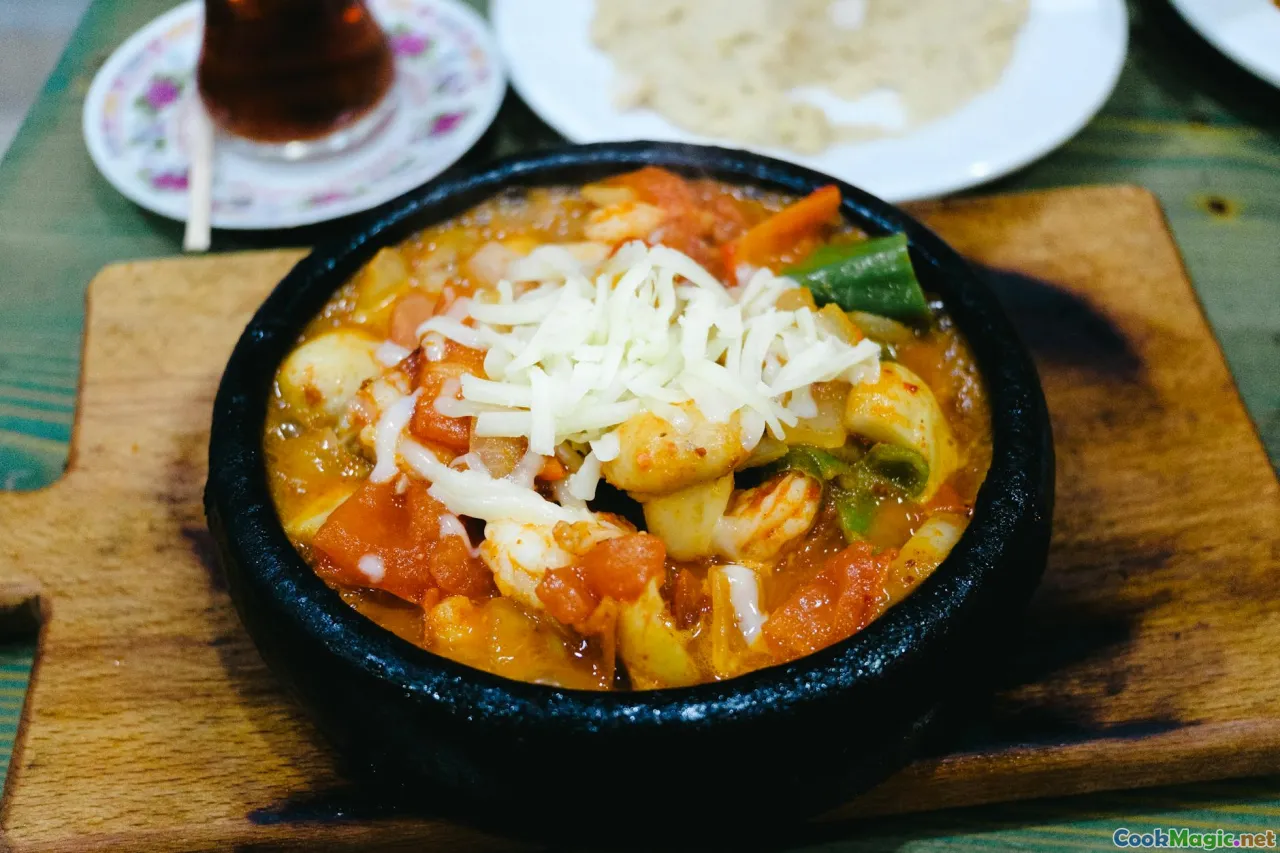The Evolution of Fiskegrateng in Modern Norway
8 min read Explore the rich history and modern transformation of Fiskegrateng, Norway's beloved seafood casserole, in this deep dive into culinary tradition and innovation. May 10, 2025 21:00
The Evolution of Fiskegrateng in Modern Norway
Imagine a cold Norwegian evening, the scent of baked fish and creamy sauce filling the cozy kitchen, as generations gather around the table. Fiskegrateng, a humble yet cherished seafood casserole, has been a staple in Norwegian homes for decades. But like many traditional dishes, it has evolved—adapting to modern tastes, health trends, and culinary innovations. This is a story of heritage, resilience, and reinvention.
Introduction: A Comfort Food with Deep Roots
In Norway, where fjords carve majestic landscapes and the sea is an omnipresent source of sustenance, seafood is woven into the very fabric of daily life. Among the array of seafood-based dishes, Fiskegrateng holds a special place. Its name, literally translating to "fish gratin," hints at its hearty, comforting nature.
Picture a steaming dish out of the oven: golden-brown, bubbling edges, tender chunks of fish enveloped in a velvety, savory sauce, topped with crisp breadcrumbs. It’s more than just a meal; it’s a symbol of Norwegian home cooking—simple, nourishing, and rooted in tradition.
Historical Origins: From Peasant Kitchens to Norwegian Tables
Fiskegrateng likely originated in rural Norway, where preservation methods like curing and smoking fish were common. The dish is believed to have evolved as a practical way to use leftover or affordable fish, combined with ingredients like potatoes, eggs, and milk—staples in Norwegian households.
In the early 20th century, as refrigeration improved and canned fish became accessible, Fiskegrateng became even more popular. Its versatility allowed families to incorporate seasonal or local fish varieties, making it a sustainable and economical choice.
The dish's simplicity and reliance on local ingredients made it a staple during wartime shortages, reinforcing its role as a comfort food that brought warmth and familiarity amid hardship.
Cultural Significance: More Than Just Food
Fiskegrateng is intertwined with Norwegian identity. It’s often prepared for Sunday dinners, festive gatherings, or casual weeknight meals. The dish embodies the Norwegian values of resourcefulness and respect for the sea’s bounty.
In many households, recipes are passed down through generations, with each family adding their twist—perhaps a dash of nutmeg, a sprinkle of fresh dill, or a layer of cheese. These personal touches preserve the dish’s cultural relevance while allowing for individual expression.
Traditional Preparation: A Step-by-Step Journey
Ingredients:
- White fish fillets (cod, haddock, or pollock)
- Potatoes
- Eggs
- Milk or cream
- Breadcrumbs
- Butter
- Salt and pepper
- Optional: grated cheese, dill, or nutmeg
Method:
- Prepare the Fish: Poach or steam the fish until flaky. Flake into bite-sized pieces.
- Make the Base: Boil potatoes until soft, then mash or blend with milk, eggs, and butter to create a smooth, creamy mixture.
- Assemble: Mix fish gently into the potato base. Season with salt, pepper, and optional spices.
- Bake: Pour into a casserole dish, sprinkle with breadcrumbs and cheese if using, and dot with butter.
- Cook: Bake in a preheated oven at 200°C (392°F) for about 25–30 minutes until golden and bubbly.
The aroma of baking fish and buttery breadcrumbs is an unmistakable invitation to gather around and enjoy.
Modern Transformations: Innovation Meets Tradition
While traditional Fiskegrateng remains beloved, contemporary Norwegian chefs and home cooks are reimagining this classic for a new era.
Embracing Health and Sustainability
In recent years, there’s been a shift toward healthier ingredients and sustainable sourcing. Chefs now opt for wild-caught cod or sustainable haddock, reducing reliance on processed or canned fish. Incorporating vegetables like spinach, peas, or leeks adds flavor, nutrition, and color.
Dietary Adaptations
Vegan and gluten-free adaptations have also emerged. Plant-based 'fish' alternatives made from tofu or aquafaba mimic the texture and flavor, while gluten-free breadcrumbs cater to dietary restrictions.
Gourmet Twists
Some modern takes elevate Fiskegrateng into gourmet territory—adding saffron, truffle oil, or a hint of horseradish for a sophisticated flavor profile. Presentation has become more refined, with individual ramekins or layered constructions.
Personal Reflections and Anecdotes
As a food writer and someone who has explored Norwegian kitchens firsthand, I’ve seen how Fiskegrateng serves as a bridge between generations. I recall visiting a small coastal village where an elderly woman shared her family recipe, revealing a secret ingredient—freshly grated nutmeg, which she claimed added a touch of warmth and nostalgia.
One winter, I had the pleasure of tasting a modern interpretation at a Trondheim restaurant, where it was served with a side of pickled vegetables and microgreens. The dish was a perfect harmony of tradition and innovation—comfort and elegance in every bite.
The Future of Fiskegrateng
As Norwegian society continues to embrace sustainability, local sourcing, and culinary creativity, Fiskegrateng is poised to evolve yet again. It remains a canvas for chefs and home cooks alike, who see it not just as a recipe but as a story—a narrative of resilience, resourcefulness, and enduring cultural pride.
From humble beginnings in rural kitchens to upscale Nordic restaurants, Fiskegrateng epitomizes the enduring charm of Norwegian cuisine. It’s a dish that invites us to reflect on our roots while daring to innovate.
Conclusion: A Dish That Continues to Charm
Fiskegrateng’s journey is a testament to the power of tradition to adapt and flourish. It reminds us that food is more than sustenance; it’s a vessel for memory, identity, and community. Whether served in a simple home or a fine dining setting, this beloved Norwegian casserole continues to warm hearts and taste buds, one golden-baked slice at a time.
So next time you indulge in a Fiskegrateng, think of it as a living story—one that has evolved through time but still carries the soul of Norway’s sea-bathed heritage.









